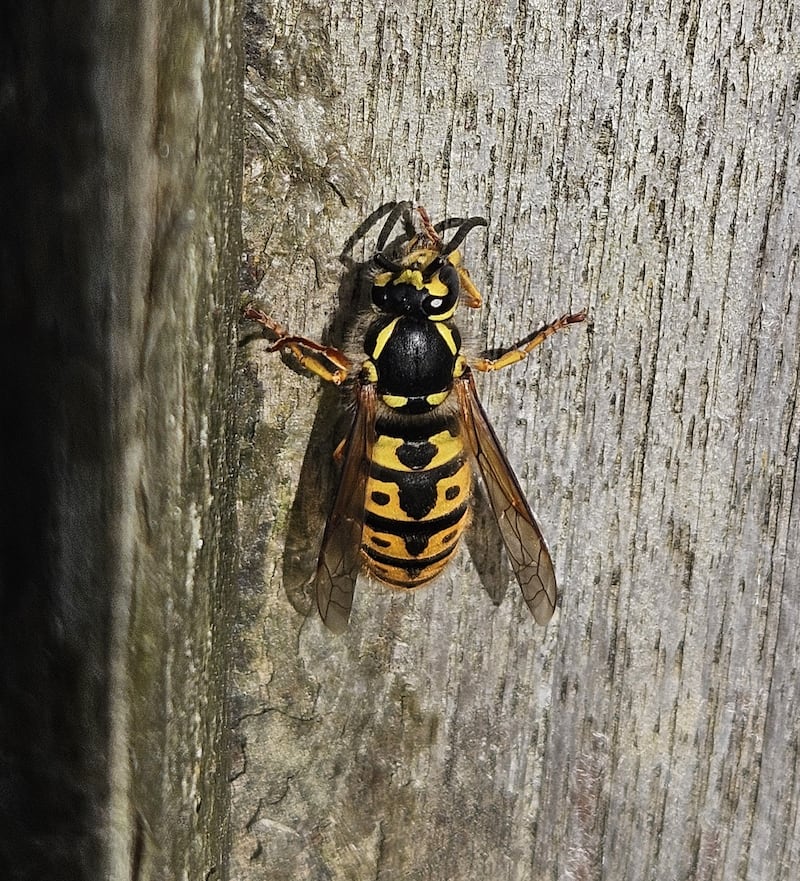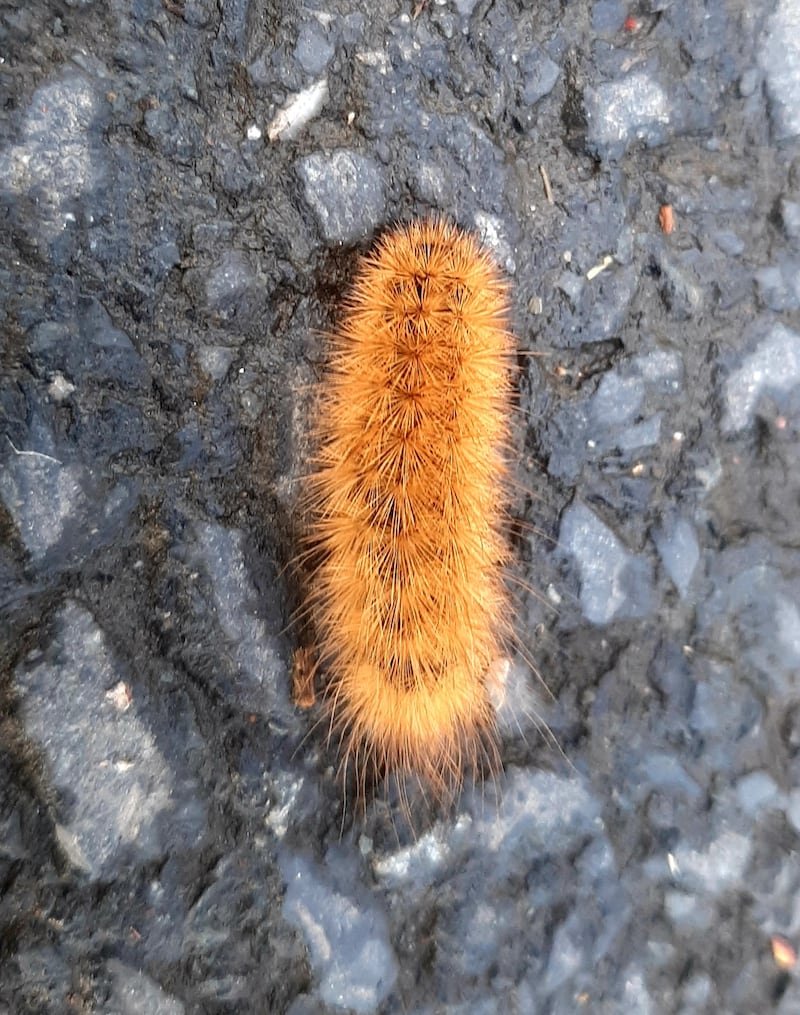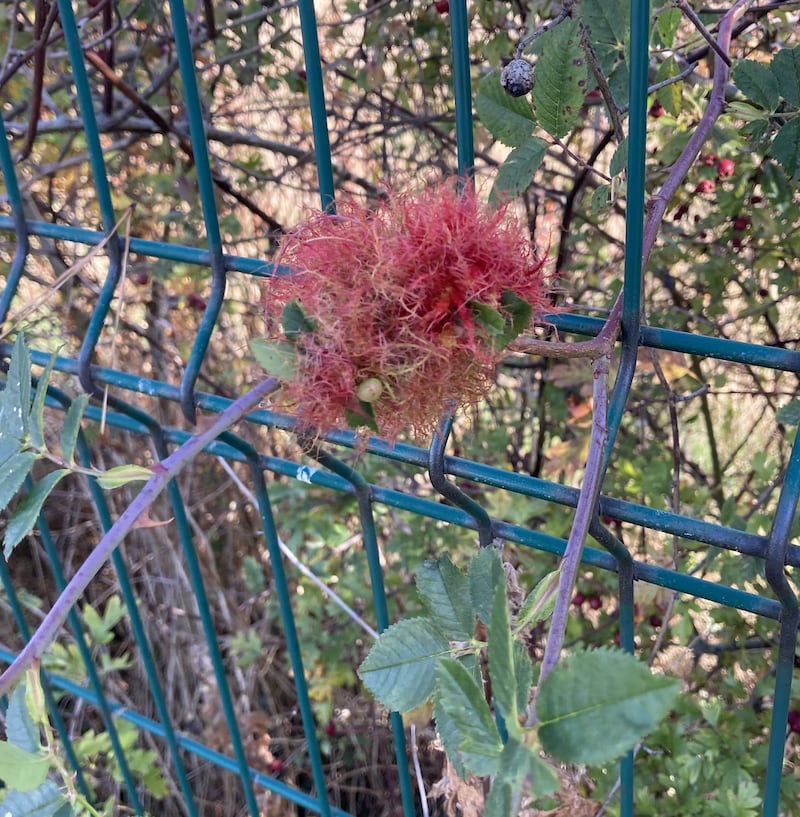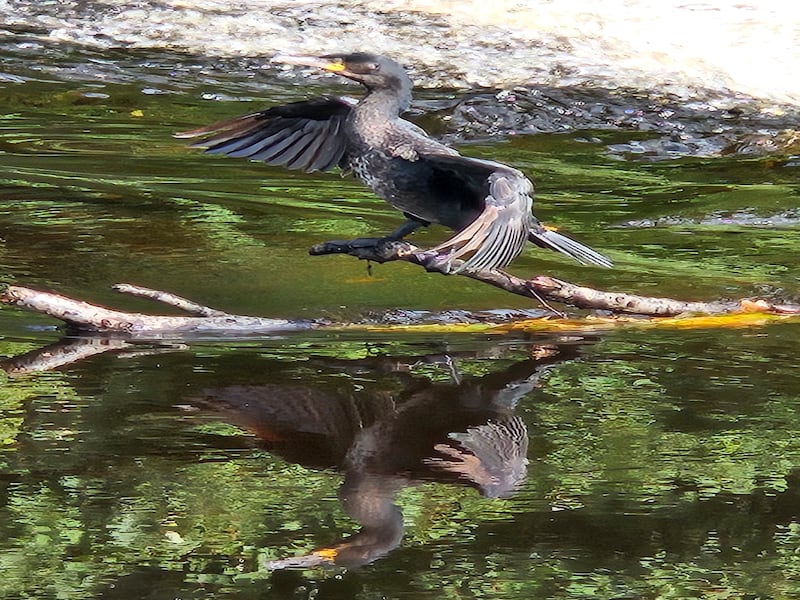I was walking the dog recently when I spotted this creature that must’ve been left by a nearby stream overflowing because of the rain. It was about 20cm long, thrashed about when touched and had firm texture. I threw it in a nearby stream and it quickly swam away. I’m wondering if it’s some type of worm or actually an eel. Brendan O’Donnell, Co Cork
It is most likely an eel but as the photo does not show the gill area, it is impossible to be absolutely certain. Eels are freshwater fish and can survive for a time in damp places out of water. There is a small chance it might be the much rarer river lamprey, which has circular openings along either side, near the head, where gills would be located. River lampreys spawn in our rivers, where the offspring live in the river mud and, when adult, return to the ocean about five years later.

I spotted this while out and about in early October. It’s about 3cm in length. Thankfully, this one was travelling on its own. Jason Cross, Co Cork
This is a young German wasp queen (Vespula germanica), a native Irish species, which was produced this year. She flies late in the year for mating, then will overwinter in piles of logs, attics and so on. Meanwhile, back at the nest where she came from, the old queen has died and the nest with the last of the workers is breaking down. She will emerge in March-April and start a new nest from scratch. Old nests are never used again.

I spotted this caterpillar on the Lagan Towpath in early October. Do you know what it is, and isn’t October late for a caterpillar, even though today felt like spring? Paul Aiken, Belfast
This is the caterpillar of the ruby tiger moth. It feeds on the leaves of woody plants and ragwort. When full fed, caterpillars normally pupate and turn into adults. This species, however, overwinters as a fully fed caterpillar and pupates into an adult in April. It is common enough and occurs widely.

I came across this near Dunboyne train station. I’m wondering what it is; I’ve never seen anything like it before. Declan Murray, Co Meath
It does look mad right enough, and it has an equally mad name – Robin’s pincushion. This is a gall that has been caused by a tiny gall wasp, Diplolepis rosae. The wasp laid its eggs in the plant tissues of the wild rose, and the activity of the grub in the growing plant tissues caused the fantastically coloured and shaped gall to grow there. Instead of the buds developing into normal shoots and leaves, they are converted into hard woody structures that have an outer covering of red moss-like leaves. Internally, the gall contains a number of chambers in which the grubs develop. They overwinter inside the galls as pupae. The galls do not harm the rose plant.

This is a cormorant on the river Dodder. Just before I took this picture, it caught a small trout. I thought at first they were seabirds. Is it normal to see them hunting in freshwater, or are they improvising due to a shortage of seafood? Ita Delogu, Dublin
The cormorant is a fish-eating bird that dives to catch prey in either sea or freshwater. It has been shown to feed on at least 22 different fish species as well as frogs, crustaceans and molluscs. In Ireland the cormorant breeds both on sea cliffs and in trees on islands in large freshwater lakes, and overwinters increasingly on rivers and lakes.
Please submit your nature query, observation, or photo, with a location, via irishtimes.com/eyeonnature or by email to weekend@irishtimes.com

















